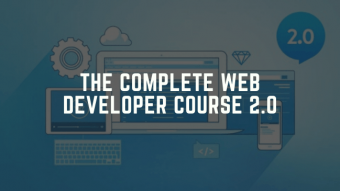Machine Learning With Python
Tags: Machine Learning
Build a Portfolio of 12 Machine Learning Projects with Python, SVM, Regression, Unsupervised Machine Learning & More!
Last updated 2022-01-10 | 4.3
- Machine Learning Engineers earn on average $166- 000 - become an ideal candidate with this course!
- Solve any problem in your business
- job or personal life with powerful Machine Learning models
- Train machine learning algorithms to predict house prices
- identify handwriting
- detect cancer cells & more
What you'll learn
* Requirements
* Basic Python programming knowledge is necessary* Good understanding of linear algebra
Description
The Complete Machine Learning Course in Python has been FULLY UPDATED for November 2019!
With brand new sections as well as updated and improved content, you get everything you need to master Machine Learning in one course! The machine learning field is constantly evolving, and we want to make sure students have the most up-to-date information and practices available to them:
Brand new sections include:
Foundations of Deep Learning covering topics such as the difference between classical programming and machine learning, differentiate between machine and deep learning, the building blocks of neural networks, descriptions of tensor and tensor operations, categories of machine learning and advanced concepts such as over- and underfitting, regularization, dropout, validation and testing and much more.
Computer Vision in the form of Convolutional Neural Networks covering building the layers, understanding filters / kernels, to advanced topics such as transfer learning, and feature extractions.
And the following sections have all been improved and added to:
All the codes have been updated to work with Python 3.6 and 3.7
The codes have been refactored to work with Google Colab
Deep Learning and NLP
Binary and multi-class classifications with deep learning
Get the most up to date machine learning information possible, and get it in a single course!
* * *
The average salary of a Machine Learning Engineer in the US is $166,000! By the end of this course, you will have a Portfolio of 12 Machine Learning projects that will help you land your dream job or enable you to solve real life problems in your business, job or personal life with Machine Learning algorithms.
Come learn Machine Learning with Python this exciting course with Anthony NG, a Senior Lecturer in Singapore who has followed Rob Percival’s “project based" teaching style to bring you this hands-on course.
With over 18 hours of content and more than fifty 5 star ratings, it's already the longest and best rated Machine Learning course on Udemy!
Build Powerful Machine Learning Models to Solve Any Problem
You'll go from beginner to extremely high-level and your instructor will build each algorithm with you step by step on screen.
By the end of the course, you will have trained machine learning algorithms to classify flowers, predict house price, identify handwritings or digits, identify staff that is most likely to leave prematurely, detect cancer cells and much more!
Inside the course, you'll learn how to:
Gain complete machine learning tool sets to tackle most real world problems
Understand the various regression, classification and other ml algorithms performance metrics such as R-squared, MSE, accuracy, confusion matrix, prevision, recall, etc. and when to use them.
Combine multiple models with by bagging, boosting or stacking
Make use to unsupervised Machine Learning (ML) algorithms such as Hierarchical clustering, k-means clustering etc. to understand your data
Develop in Jupyter (IPython) notebook, Spyder and various IDE
Communicate visually and effectively with Matplotlib and Seaborn
Engineer new features to improve algorithm predictions
Make use of train/test, K-fold and Stratified K-fold cross validation to select correct model and predict model perform with unseen data
Use SVM for handwriting recognition, and classification problems in general
Use decision trees to predict staff attrition
Apply the association rule to retail shopping datasets
And much much more!
No Machine Learning required. Although having some basic Python experience would be helpful, no prior Python knowledge is necessary as all the codes will be provided and the instructor will be going through them line-by-line and you get friendly support in the Q&A area.
Make This Investment in Yourself
If you want to ride the machine learning wave and enjoy the salaries that data scientists make, then this is the course for you!
Take this course and become a machine learning engineer!
Who this course is for:
- Anyone willing and interested to learn machine learning algorithm with Python
- Any one who has a deep interest in the practical application of machine learning to real world problems
- Anyone wishes to move beyond the basics and develop an understanding of the whole range of machine learning algorithms
- Any intermediate to advanced EXCEL users who is unable to work with large datasets
- Anyone interested to present their findings in a professional and convincing manner
- Anyone who wishes to start or transit into a career as a data scientist
- Anyone who wants to apply machine learning to their domain
Course content
13 sections • 111 lectures








 This course includes:
This course includes:








![MERN Stack E-Commerce Mobile App with React Native [2021]](https://img-c.udemycdn.com/course/100x100/3655146_832c_3.jpg)







